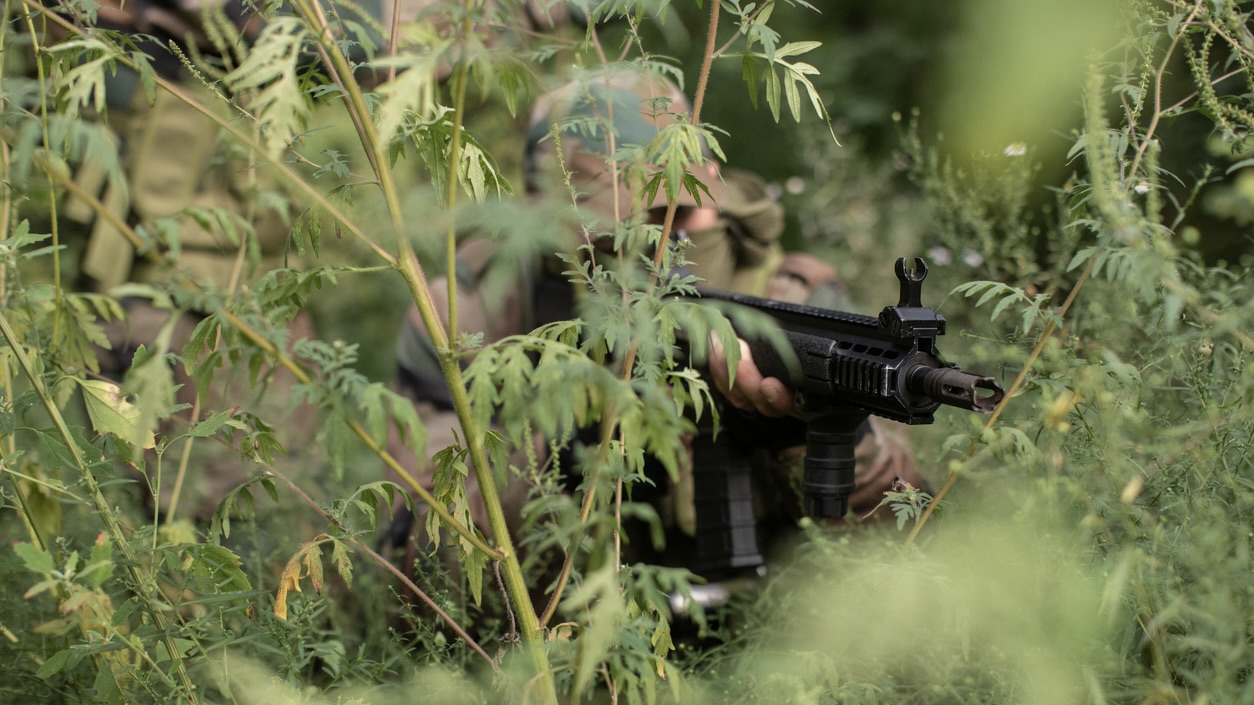According to official figures, 186 Maoist bodies have so far been “recovered” across the Bastar range in 2025, including 31 in a major encounter in the Karreguttalu Hills along the Chhattisgarh-Telangana border. Among those killed were 16 women.
Published Jun 05, 2025 | 8:54 PM ⚊ Updated Jun 06, 2025 | 5:21 AM

The number of districts affected by Maoist violence has fallen from 126 in 2018 to 38 in April 2024.
Synopsis: A 67-year-old senior Maoist leader, Thentu Lakshminarasimha Chalam – also known as Gautam or Sudhakar – was killed in an anti-Naxal operation by security forces in Chhattisgarh’s Bijapur district, officials confirmed on 5 June. The encounter, part of the ongoing Operation Kagar, follows the recent killing of CPI (Maoist) General Secretary Keshava Rao and is being touted as a significant blow to the Maoist leadership in the Dandakaranya region.
Weeks after Nambala Keshava Rao, General Secretary of the CPI (Maoist), was killed along with over 26 other Left-wing extremists in a gunfight with security forces, another senior Maoist leader has been gunned down in Chhattisgarh’s Bijapur district.
Thentu Lakshminarasimha Chalam – better known by his aliases Gautam or Sudhakar – was a veteran Maoist commander with a ₹40 lakh bounty on his head. His death is being seen as a significant blow to the Maoist insurgency in the Dandakaranya region.
In a statement issued on 5 June, the Superintendent of Police, Bijapur, said that acting on specific intelligence inputs, joint teams of the Special Task Force (STF), District Reserve Guard (DRG), and CoBRA launched a high-risk search operation in the National Park area, resulting in a fierce exchange of fire.
“The inputs indicated the presence of Central Committee member Gautam aka Sudhakar, Telangana State Committee member Bandi Prakash, Dandakaranya Special Zonal Committee member Pappa Rao, and a few other armed Maoist cadres. Acting on this input, joint troops of STF/DRG and CoBRA were launched for the search in the area,” he stated.
He further added that preliminary reports pointed towards the likelihood of a “massive success” in the ongoing anti-Naxal operation.
So far, one Maoist death has been confirmed. Thentu Lakshminarasimha Chalam, aged 67, was a native of Pragadavaram village in Andhra Pradesh’s West Godavari district and had been associated with the CPI (Maoist) for over four decades. He was regarded as a key figure within the organisation.
During the operation, security personnel recovered an AK-47 rifle and a large cache of explosives, arms, and ammunition.
“The death of Gautam marks a major success for the security forces and is a significant blow to the Maoist leadership, particularly in the Dandakaranya region. His neutralisation is expected to cause a considerable setback to the already weakening strength of the banned and outlawed Maoist organisation,” the statement added.
Since early April, security forces have been conducting a sweeping counterinsurgency campaign dubbed Operation Kagar.
According to official figures, 186 Maoist bodies have so far been “recovered” across the Bastar range in 2025, including 31 in a major encounter in the Karreguttalu Hills along the Chhattisgarh-Telangana border. Among those killed were 16 women.
The joint offensive, involving personnel from the Central Reserve Police Force (CRPF), STF, DRG, and state police units, has been presented by the Centre as a major escalation in its efforts to eliminate Left-wing extremism.
Union Home Minister Amit Shah described the campaign as a “landmark achievement” and reaffirmed the NDA government’s target of eradicating “Naxalism” by 31 March 2026.
However, the operation has drawn criticism from activists and opposition parties, including the Communist Party of India (CPI) and the Bharat Rashtra Samithi (BRS), who have raised concerns about alleged civilian casualties, lack of transparency, and the targeting of tribal communities.
(Edited by Dese Gowda)
